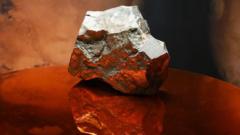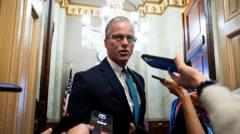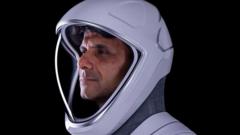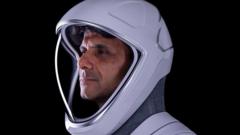With remarkable achievements of autonomous spacecraft like NASA's Parker Solar Probe, scientists ponder whether human astronauts are necessary in future space missions. While robots continue to explore planets and gather scientific data, human presence is celebrated for its inspirational value, sparking a debate about efficiency, costs, and the evolving role of AI in space travel.
The Future of Space Exploration: Can AI Outshine Human Astronauts?

The Future of Space Exploration: Can AI Outshine Human Astronauts?
As AI technology advances, key experts debate the future role of human astronauts in space exploration amidst successful robotic missions.
In recent years, advancements in robotics have paved the way for a new era in space exploration, prompting discussions about the necessity of human astronauts. The Parker Solar Probe, an autonomous spacecraft, achieved a record-breaking flyby of the Sun without any direct human involvement, showcasing the heights robotic technology has reached. This raises questions about the future of human exploration of the cosmos as robotic ships continue to explore realms beyond our grasp.
As robotic probes surpass human capabilities, prominent figures in astrophysics question the need for human involvement in space missions. Lord Martin Rees, the UK’s Astronomer Royal, advocates for a reduction in taxpayer-funded human exploration, arguing that robots can fulfill tasks more effectively and safely. Alongside him, Andrew Coates from University College London emphasizes the cost-effectiveness of robotic missions, given that advancements in artificial intelligence continue to enhance their capabilities.
However, this emerging technological prowess brings about anxiety for aspiring astronauts. Certain functions, based on human ingenuity and adaptability, may remain beyond the reach of machines. Rovers have extensively explored the solar system while humans have physically ventured only to the Moon and Earth’s orbit. Prestige and the human spirit of exploration are often cited as compelling reasons for sending humans into space, driving national pride and international competition.
Researchers like Dr. Kelly Weinersmith suggest that although robots can methodically conduct research, humans are more versatile; yet, the costs of sustaining human life in space are exorbitant. As articulated by Dr. Ian Crawford, while AI may prevail in complex tasks on Earth, the vast and dynamic environments of space present a different challenge where human intuition and creativity play vital roles.
NASA is exploring various robotic designs, including the humanoid Valkyrie, which was built to complete tasks under human-like conditions. These advanced robotic assistants may alleviate some of the burdens faced by astronauts during long missions. AI applications could automate mundane tasks, allowing astronauts to concentrate on critical scientific tasks instead.
Despite the effectiveness and efficiency of robotic explorations, a deeper connection exists between humans and audiences back on Earth. Leroy Chiao, a retired NASA astronaut, emphasizes that the excitement generated by human space travel inspires further interest and support for scientific exploration. The sheer notion of a human colonizing Mars, spearheaded by projects from SpaceX and NASA’s Artemis program, evokes interest reminiscent of the first Moon landing.
Looking ahead, humanity's next steps could bridge the gap between robotic and human exploration, incorporating genetic modifications and biomechanical enhancements to adapt to alien environments. Regardless, the journey toward advanced exploration remains collaborative, requiring both human ingenuity and robotic proficiency in untangling the mysteries of outer space. Until then, robotic pioneers will continue depicting the universe's wonders, sparking the imagination of generations to come.

















